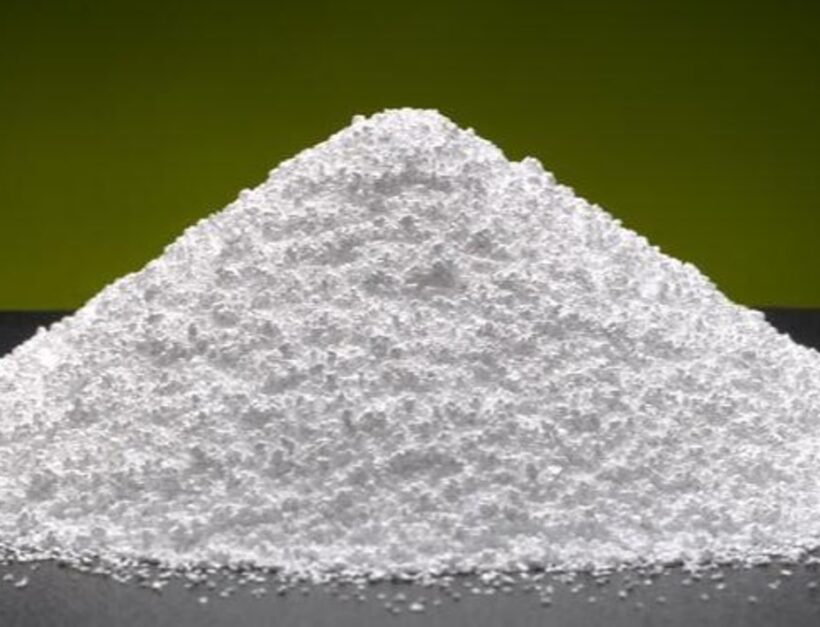Polytetrafluoroethylene (PTFE) is known by the trademarks Teflon, Polyflon, Fluon and more. It has a distinguished slippery surface, high melting point and resistance to attacks by most of the chemicals. Due to these properties, it is used as a coating for non-stick cookware.
PTFE is also an exceptional low-friction polymeric material that is used as a solid lubricant. However, it has a very low wear resistance and is therefore used in various composites. Hard filler particles have to be added to improve its wear resistance like glass fibers, copper, carbon fibers and ceramics.
Other fillers that act as lubricants can also be added like bronze, graphite, molybdenum disulfide and more. They help to improve the wear resistance and retain a low friction coefficient. PTFE is also added as a filler in polymeric materials that have good mechanical properties and poor tribological properties like epoxy, polyamide and more.
For example, PTFE is added to epoxy to create a polymer epoxy blend that shows a 20% reduction in friction coefficient. A new solid lubricant is formed with expanded PTFE film as the outer covering and epoxy as the reinforcement. This composite is processed to form thin films which can be bonded on various substrates. This film can be coated on bearing components. It helps to reduce friction, wear and energy consumption in machinery.
PTFE is widely used in industries for bearings, side plates, gears, bushings and applications that have moving parts. Teflon powder is also used in lubrication sprays.
Properties of PTFE
Polytetrafluoroethylene is a helical linear polymer consisting of a chain of carbon atoms with two fluorine atoms attached to each carbon atom. The carbon chain is tightly surrounded by fluorine atoms which act as a protective layer. This creates a relatively inert and dense molecule with very strong carbon and fluorine bonds.
The properties of PTFE are:
- PTFE is a white colourless solid that is non-toxic and insoluble in most solvents.
- It has a melting point of 327° C but its properties begin to decline at temperatures above 260° C.
- It has the third-lowest coefficient of friction of any known solid material. It maintains high strength and self-lubrication even at low temperatures down to -268.15° C.
- It has outstanding thermal stability and toughness at low temperatures.
- It is a good insulator even in wet environments. It is hydrophobic and water and water-containing substances cannot wet it.
- It has a high chemical resistance though it reacts with alkali metal in liquid form, fluorine gas at high temperatures and few organic halogenated compounds.
Synthesis
PTFE is made using these two basic processes:
- The TFE (Tetrafluoroethylene) monomer is first produced by combining Calcium Fluoride, Sulphuric acid and Chloroform. Polytetrafluoroethylene is polymerised to produce PTFE. The smaller molecules or the monomers are chemically joined to create a chain-like structure or polymer. The process is carried out in a controlled environment.
This process requires a pure monomer and if there are impurities then it will affect the final product. This process produced granular Teflon.
- Pure TFE can react violently even at temperatures below room temperature. In this process, Aluminium Persulfate, Borax and water are added to a reactor. The pure monomer is added and agitated at around 80° C. After an hour the reactor yields the polymer.
This process produces a dispersion of polymer with fine particle size and lower molecular weight.
Applications
Some of the applications of PTFE are:
- PTFE is used in lubrication products for musical instruments such as valve oil.
- It is widely used for the insulation of wires in computer applications and the aerospace industry. This is because it has good dielectric properties. It is an excellent insulator and is used in cables, printed circuit boards and more.
- It has a high melting point and can be used as a substitute for low-melting point polyethylene in low-cost applications.
- PTFE is widely used in carbon composites and fibreglass composites in the aerospace industry.
- Because of its inertness and high-temperature rating, PTFE is used as a liner in hose assemblies, industrial pipelines, and applications that require the transmission of corrosive acids, alkalis and other chemicals. It can be used for storing and transporting highly reactive chemicals.
- PTFE architectural membranes can be created by coating a woven glass fibre cloth with PTFE. This creates the strongest and most durable material that can be used in structural engineering.
- It is used in the automobile industry due to its strength and resistance to heat and chemicals. It is used to improve the quality of car parts like ball bearings, axles, exhaust systems and more.
Read Next:





